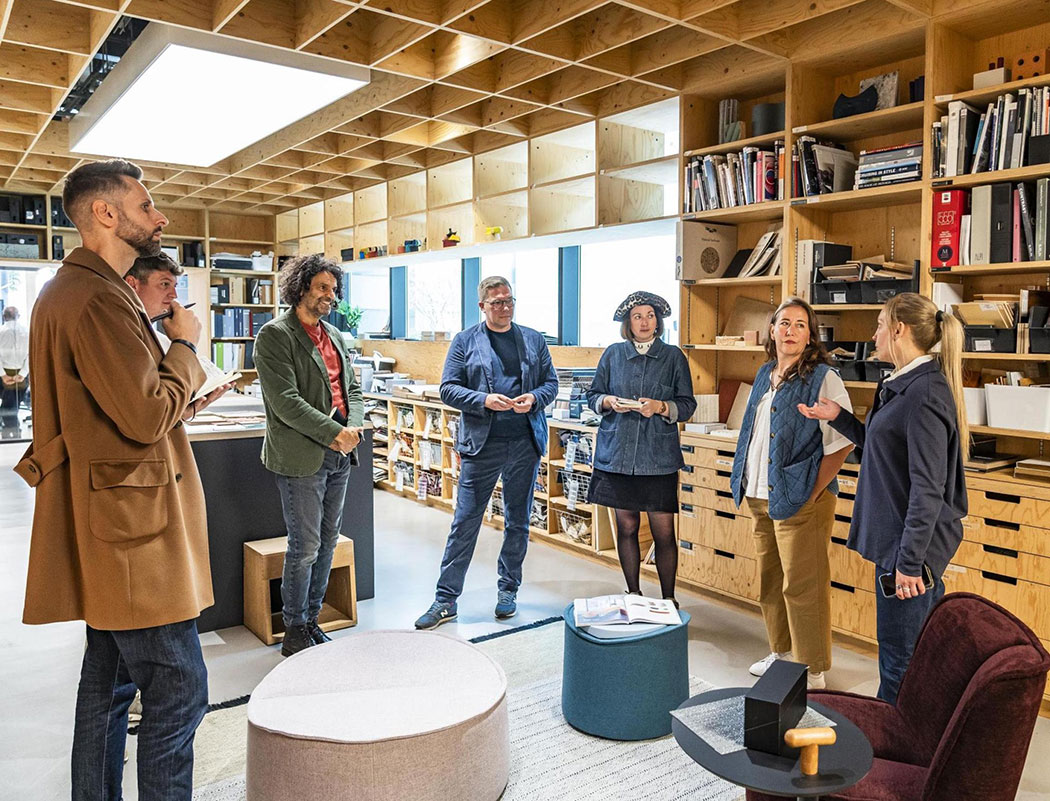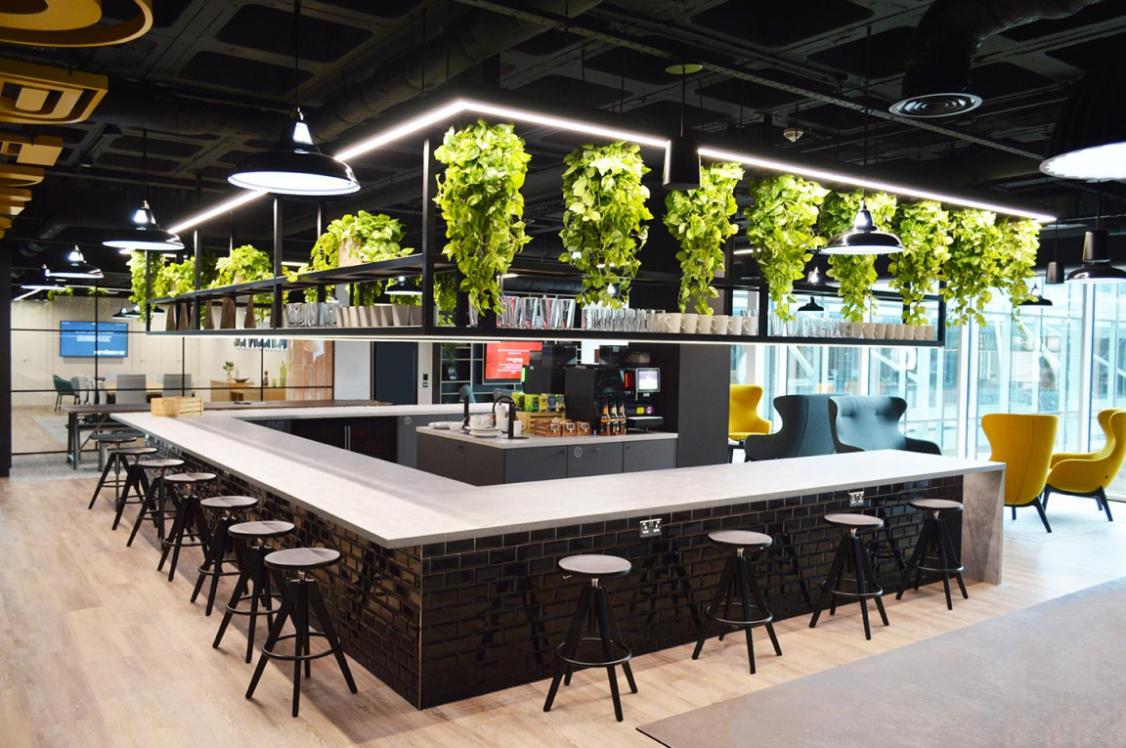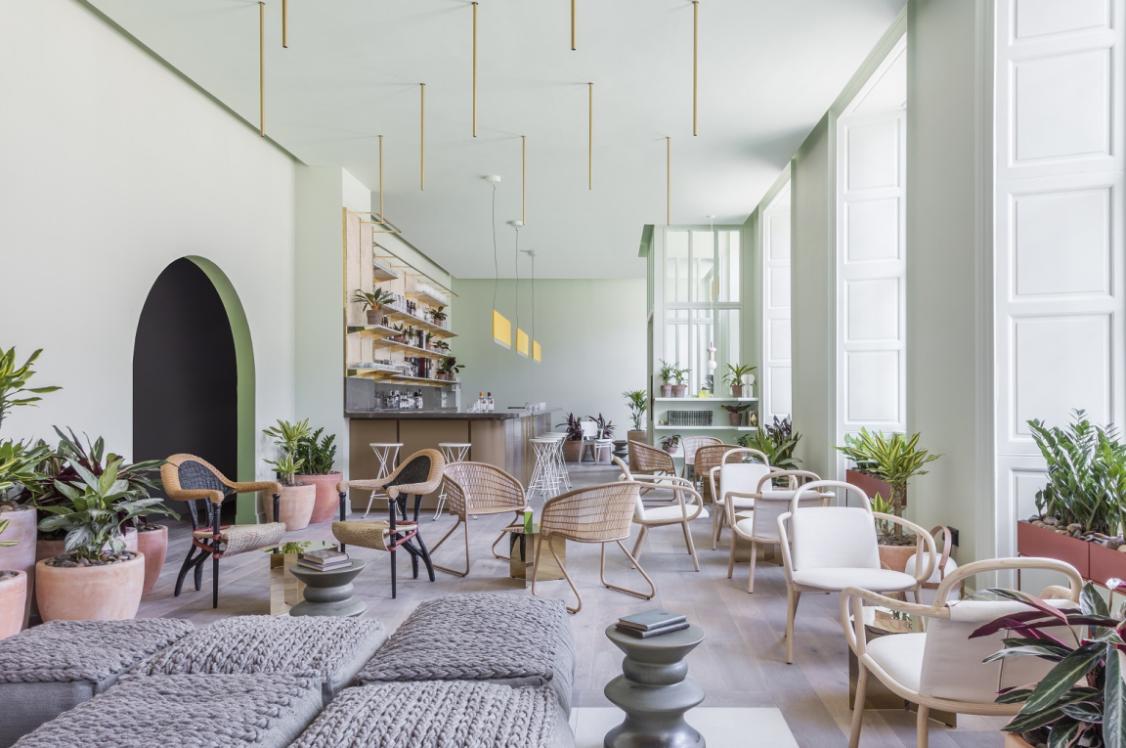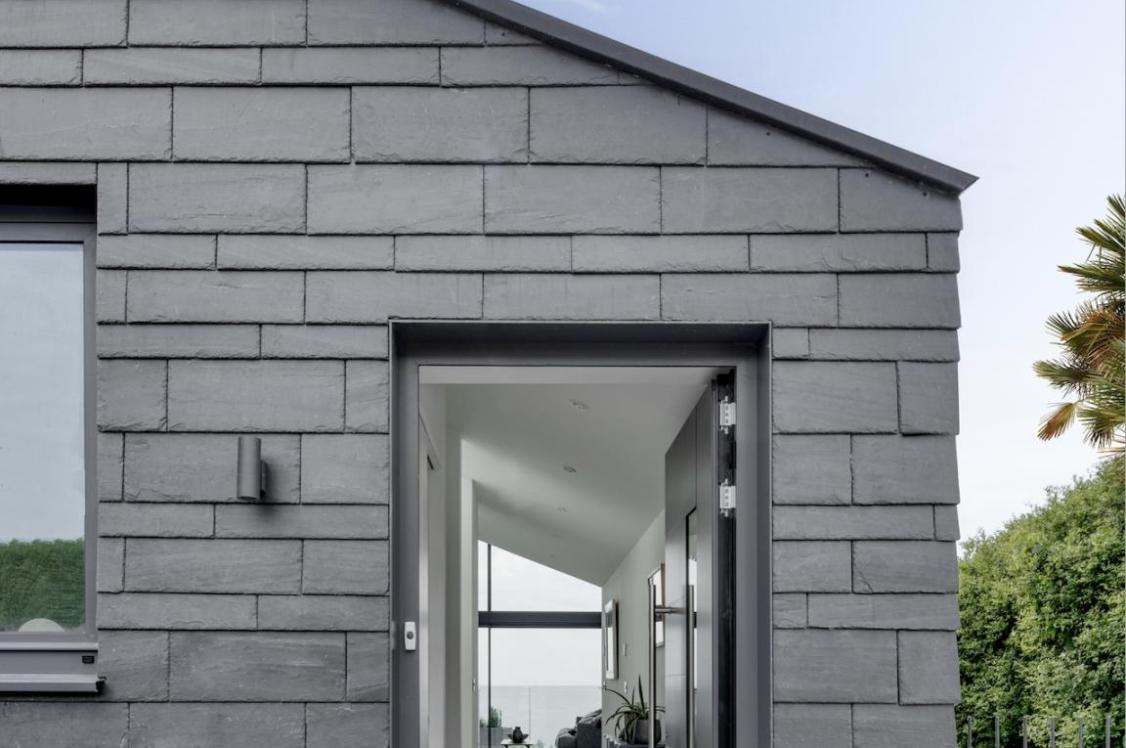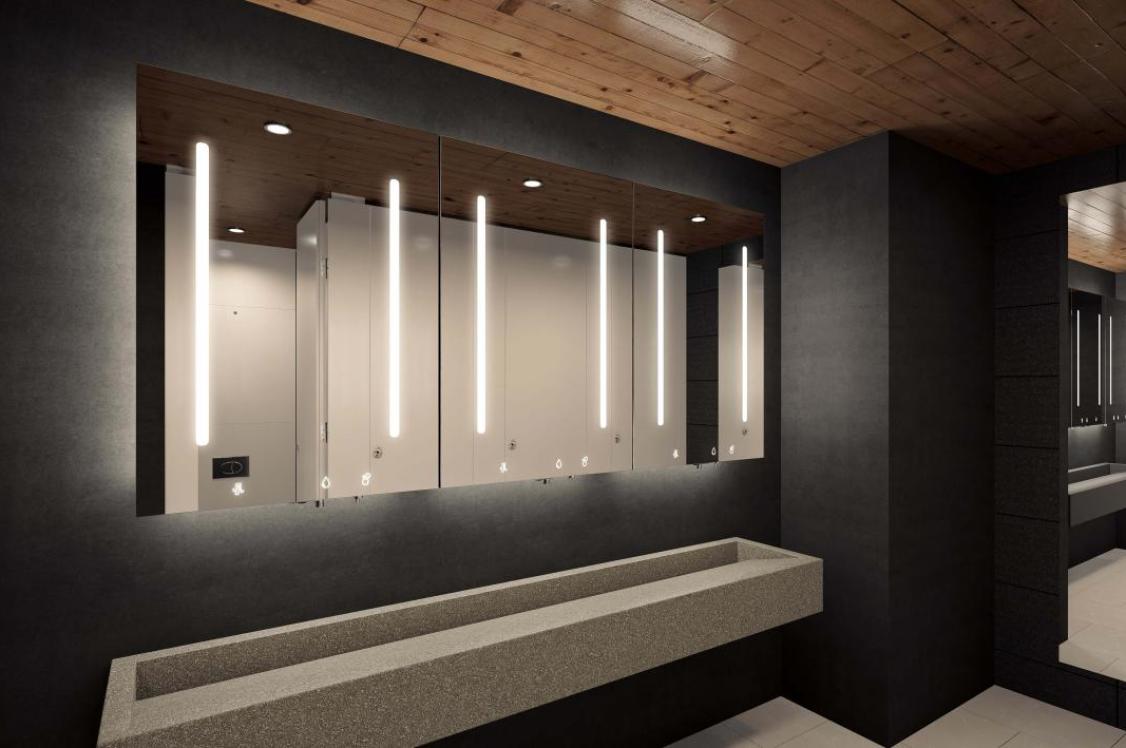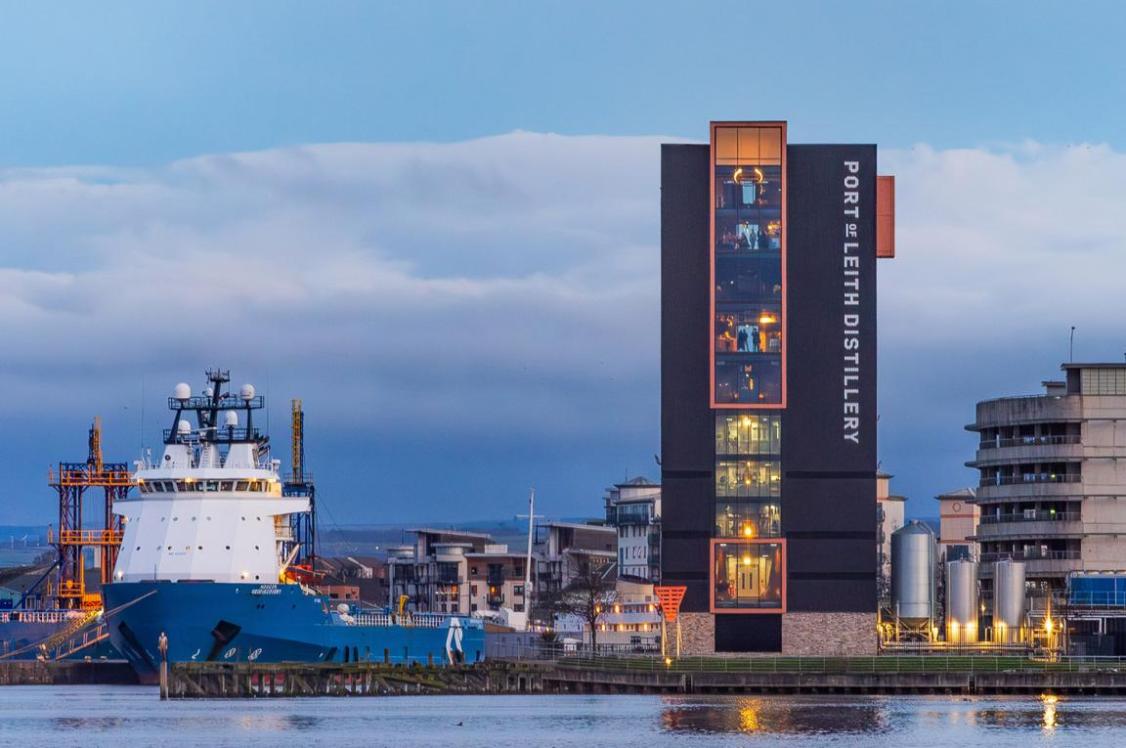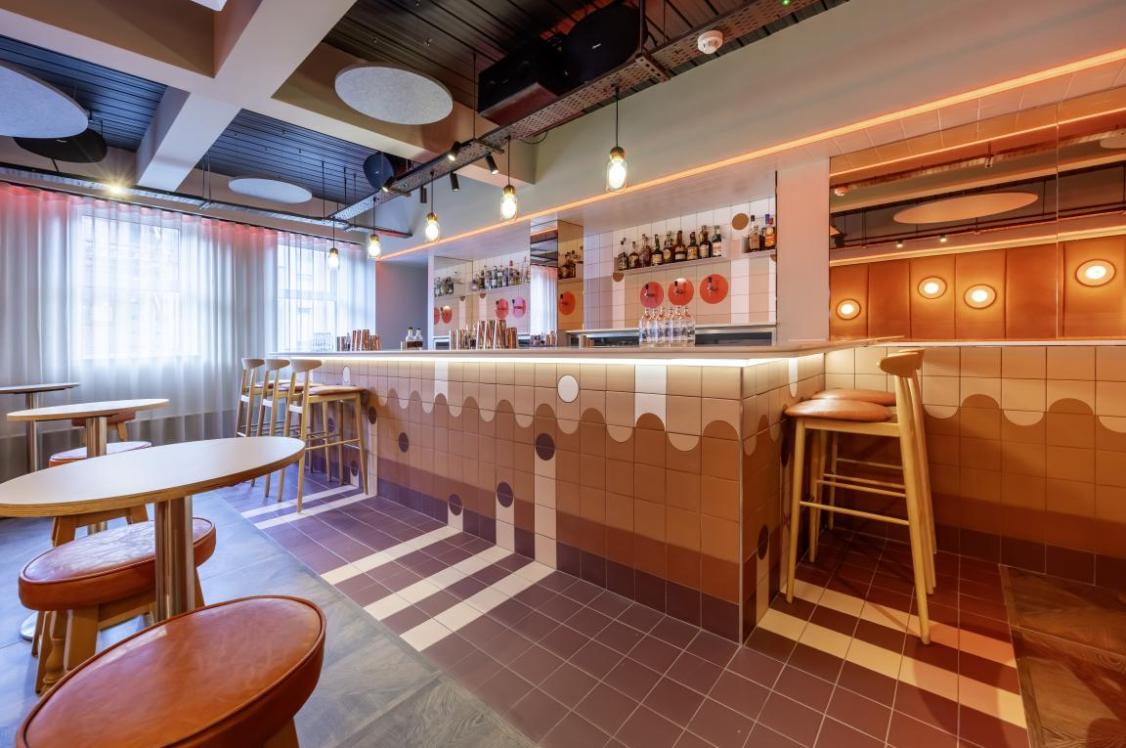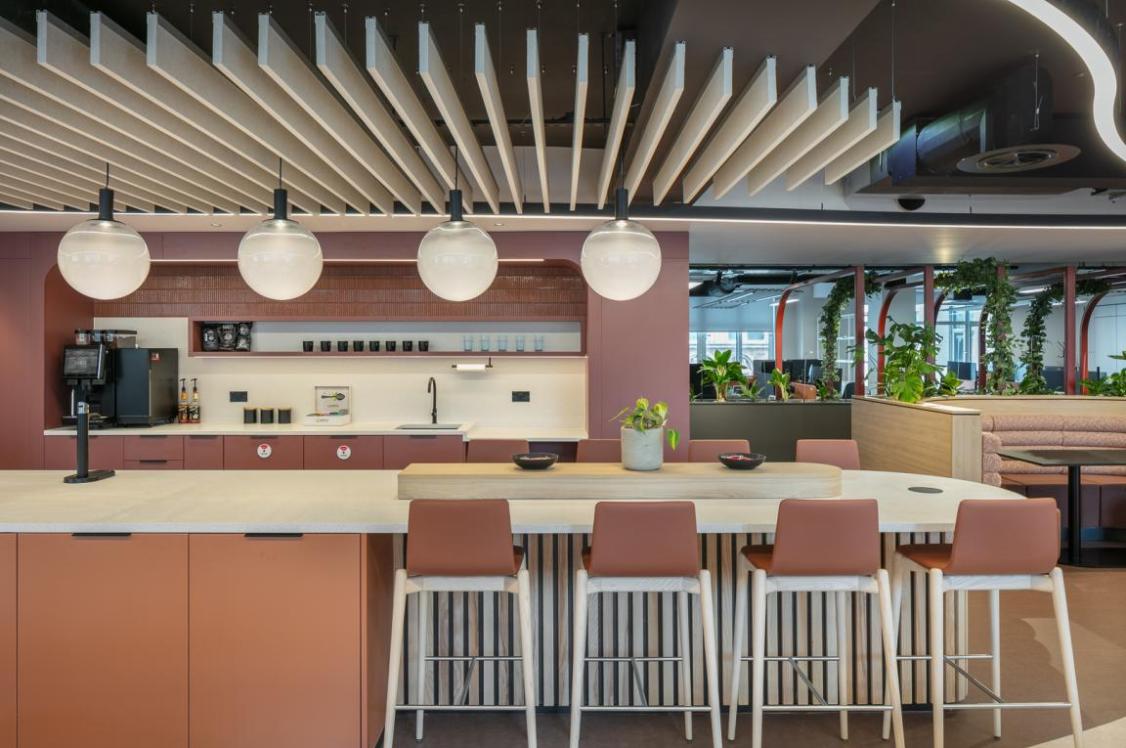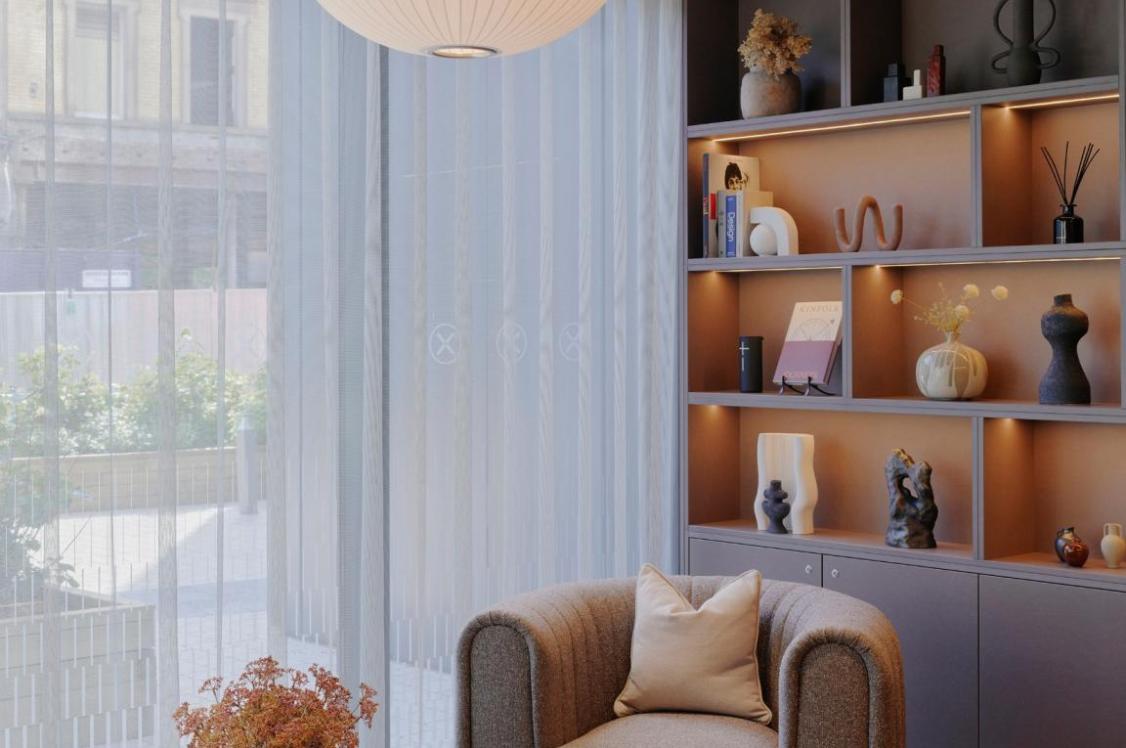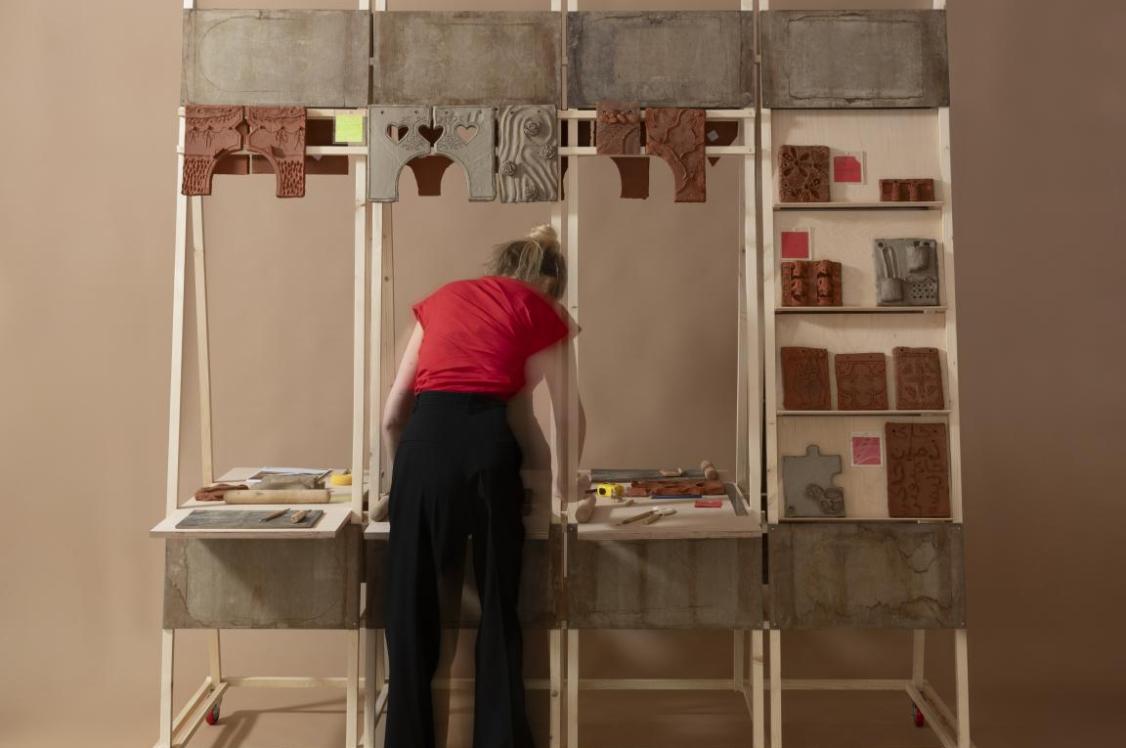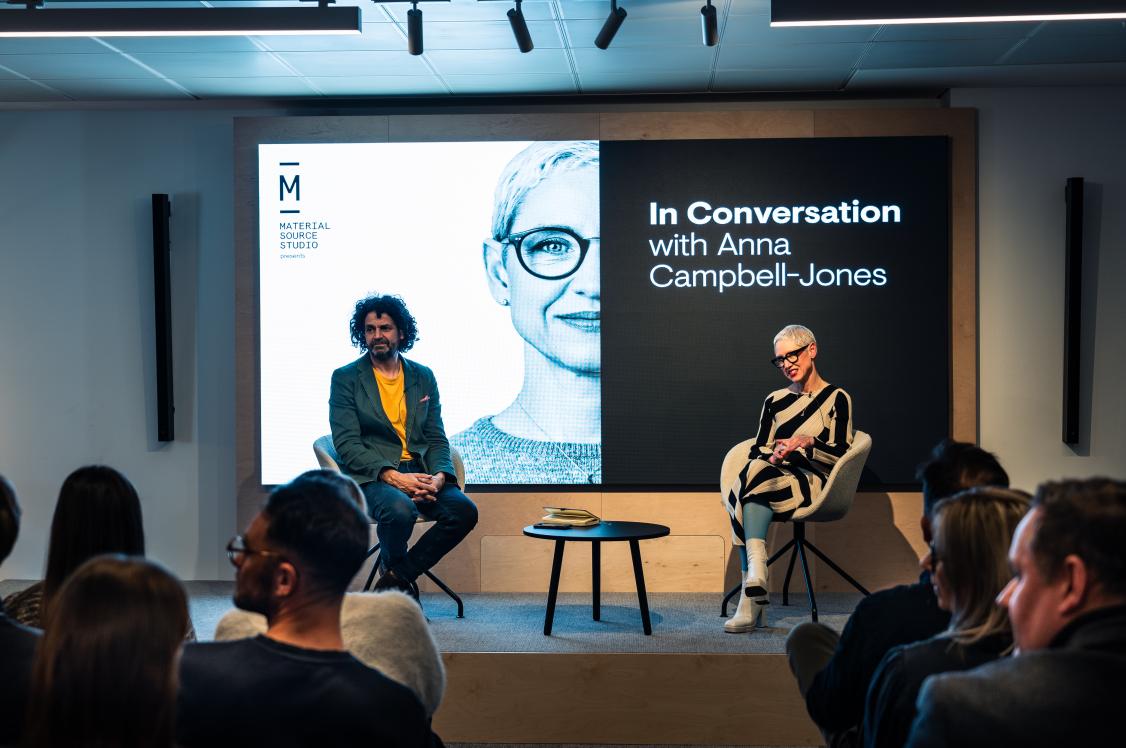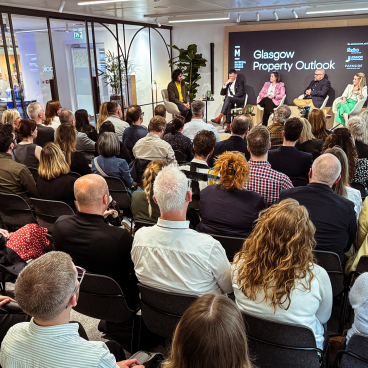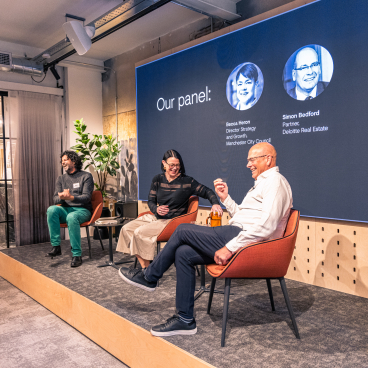Material Source Studio Asks: Does Glasgow have the right residential mix?

Hot on the heels of our Glasgow Property Outlook seminar at Material Source Studio Scotland, we hosted a roundtable discussion honing in specifically on the residential sector.
Research by Shelter Scotland, the Chartered Institute of Housing, and the Scottish Federation of Housing Associations states that to meet the current housing shortfall, Scotland needs to build at least 37,100 social homes before 2026.
Keen to find out how Glasgow is faring across the full residential spectrum, from social housing, to build-to-rent schemes, and student accommodation, we brought together a well-placed group of professionals with a diverse set of perspectives to take part in a conversation with chair, Material Source director, David Smalley, to consider whether the city's residential mix is quite right in view of meeting its longer term goals, while covering the associated challenges and opportunities.
Our guests

Ciara McInnes, senior architect, Oberlanders

David Mcgowan, director, Corstorphine & Wright

Gary Mappin, director, Iceni Projects

Heather Macsween, associate, Keppie Design

Stuart McHendry, senior sustainability consultant, Cundall

Ewan Ross, associate, DB3 Architecture

Timmi. Thorsen, sales manager, Habitech Limited

Mark Darnbrough, commercial sales manager, Invictus

David Smalley, director, Material Source
Striking a balance
To start, David picked up where the following night’s seminar left off: “As far as I know, for a city to be successful it has to offer a mix, covering live, learn, work and play. After the seminar last night, I came away with the sense that perhaps the mix isn’t quite right in Glasgow. What are your thoughts?”
Gary Mappin, Iceni Projects, responded, “When the City Council published its City Centre Living Strategy a couple of years ago, its ambition was to take the city centre population from 20,000 residents to 40,000. Now, that’s from small, to a bit bigger than small”, he commented, citing a study that was done around a decade ago tying into regeneration work by Austin Smith Lord, which benchmarked Glasgow against other major European cities and found it only second to Oslo in terms of having the lowest city-based residential population.
Speaking on the previous evening’s panel, Mandy MacDonald, head of infrastructure and new development, Glasgow City Council, stated the current figure of residents in Glasgow city centre, according to the most recent census, as 28,000.
As was outlined during the seminar, Glasgow has clear challenges. One of which Gary flags as being that sites for residential development are “not that easy to find”. “The last new-build residential development in Glasgow was Buchanan Gardens on Buchanan Street – and that was at least 13-years ago.”
Referring back to the ‘mix’, Gary added, “In residential it’s low, and the impact of having a low residential population working from home – Glasgow has the lowest return to work rate in Scotland – means we need to look at how we bring people back into the city after Covid.”
“But is there enough space for people to live in the city?” asked David McGowan, director, Corstorphine & Wright. “When it comes to people working from home, if they’re living outside of the city, what’s the draw back to the city centre? There isn’t one.”
In the public sector, the offered hybrid split is said to be 80/20 – the former from home, and the latter office-based, but negotiable. “So, isn’t this the root cause of that then?” suggested David.
Heather Macsween, associate architect, Keppie Design, replied, “Glasgow City Council itself is a large employer, and when you add that to the many colleges and universities, there’s massive footfall” – again, echoing the previous night’s discussions - there are missed opportunities here.
“But if you’re an employer and you have things to consider such as energy costs, rent and rates, why would you bring people back?” queried Mark Darnbrough, commercial sales manager, Invictus.
Private and public sector were highlighted at this point – with budget constraints/allocations treated completely differently in each.
“The residential market is more skewed towards PBSA”, continued Ciara McInnes, Oberlanders, “they’re the biggest schemes coming through the pipeline at the moment. The main challenge is in social and affordable houses, and homes for key workers – when these sites come up, there’s competition from the private sector, and it’s really difficult for these bodies i.e. the RSLs (Residential Social Landlords) to participate in that market.”
The UK GOV website states that, “the NPPF requires that at least 10% of new homes in major residential developments are for affordable home ownership”. Though the question as to whether that’s being delivered remains.
“We certainly need that balance”, added Ciara, “while some of the market does need to be driven by BTR and PBSA, there needs to be space in that dense city for the people who do the jobs that keep this city going every day.”
“Or have a cross rail that brings them in?” suggested David. “That’s a whole other debate”, replied Ciara.



Policy and affordability
“What’s interesting is when you compare how policy works in Glasgow and Edinburgh”, commented Heather. “At the Ocean Terminal Scheme in Edinburgh we’ve got 20% affordable housing alongside BTR. And the way it works is the apartments are no different, but it’s simply down to the management strategy to offer a rate of rent for NHS workers, or those working locally. The beauty of it is you get all different types of people living in one area, rather than in silos.”
“What drove this mix?” asked David McGowan. “It was down to the policy there”, answered Heather.
The way the policy in Glasgow is interpreted, however, has been questioned. A quick Google search reveals that there has been some criticism of the council in relation to meeting the national quota of affordable housing per development. Though the roundtable guests suggest there are underlying politics at play. Though there’s been a recent push on asking ‘why doesn’t Glasgow have a policy on affordable housing?’, Gary suggests the answer as being that “Glasgow is [already] an affordable city.”
He continues, “That’s why we attract large employers because it’s a low cost place to employ people and there is affordable accommodation. Fundamentally, though, there used to be council houses – they are now run by housing associations – and rather than them wanting a portion of a development, they want their own area to run.
“In Glasgow you would need to ‘red line’ the affordable housing areas, and I wouldn’t want to be the person drawing that line.”
Stuart McHendry, senior consultant, Cundall, referred to a city centre BTR scheme its team is currently working on, funded by a Dutch investor, and including 400 apartments – presenting a solid example of the types of schemes coming through in Glasgow currently. “They’re bringing in quite a lot of green space to regenerate the area while pushing the boundaries in terms of sustainability – it’s low carbon, WELL and Passivhaus designed. There’s also dedicated outdoor, allotment-style space for growing, and a nearby park.”
“We’ve just finished the MODA scheme up the road – the first one they’ve done here - and there are various PBSA schemes”, added Gary. “What’s interesting is the mix. In Manchester the place is buzzing because people live in the city. You’ve got to get people in.”
Speaking on the topic of the residential journey, Ewan Ross, DB3 Architects, mentioned that BTR is the next logical step for many graduates on leaving their student accommodation.
“If you look at PBSA, it has somewhat a bad reputation – but they are homes for students, and Glasgow is proud of its educational institutions – plus it’s a big part of the city region economy - but they do get treated as transient. Part of the mix is looking at where they’re going after this, because there’s no space in private rental”, Gary continued.
The supply is so tight in the traditional market that the rent is more than a mortgage – Gary Mappin, Iceni
“It’s remarkably high”, said David McGowan, giving the example of student accommodation in Glasgow where the weekly rent was around £350, and this wasn’t for a premium development. “PBSA should be an accessible offer to all students. We need affordable.”
“Whether you’re in BTR or PBSA, there is just a lack of affordable”, added Gary.


Changing expectations
David asked the guests how they thought the continuation of rent control would affect the market – to which Ciara responded that there’s already a sense of the impact, “Supply chain in BTR - investment from international and across the UK has been stepped back.”
Mark seconded this, “Building to live has dropped by 25% since lockdown with the increasing mortgage rates – if a developer has somewhere to build, they’re sitting on it. And it’s clogging up the system.”
“Expectations have got to change”, said Ewan, “and it’s not just BTR it would affect but the whole spectrum of private rental."
The consensus is it’s unlikely that the new bill will come to be legislation. If this is the case then, “how fast will things start moving in the market, specifically for BTR”? asked David.
There needs to be confidence from investors – it won’t be a flick of the switch, it’ll take some time to settle – Ciara McInnes, Oberlanders
“For the funds, it’s about risk management”, added Gary. “There will need to be a clear policy from the government.”
“Could there be an uplift in confidence following the general election?” Asked David. Nods from around the table signified, yes. But stability is crucial. For context, in the last 13-years there have been 16 housing ministers.
It’s often said that tough times fuel innovation, and that’s exactly what David McGowan believes has happened in the development sector with the likes of corporations traditionally with retail backgrounds, having their own development arms. “There are gaps in the market and these brands have spotted the opportunities”, he commented. “We’ll see more of this, as well as contractors readying theirs. Regardless of politics, it’s time for change.”
Though said to make up a relatively small portion of the development sector, supermarket conglomerates, in many cases, are said to own the land that surrounds their stores.
On this point, David McGowan said of holding land after it’s been consented, while in Glasgow the limit is three-years, in Dundee, where he is working on a PBSA project, it’s 18-months. “I think that’s a strong advantage from an LPA point of view, where you must prove you’re delivering on your ambition to develop the site.”
“And why is that a good thing?” asked David Smalley. “Because it encourages activity”, replied David McGowan – a statement met with nods from some but not all. “But, doesn’t it just add more pressure?”
“That timescale begins from when you’ve got permission”, said Gary, “and it’s whether or not it’s worth the hassle getting to that point.”



Upward density
Moving on to discuss tall buildings – a topic that was raised at the recent Glasgow Property Outlook seminar with Andy Dale, DM group manager, Glasgow City Council, sharing details of a tall buildings guide that’s currently being put together.
Though as part of the roundtable discussion, Gary said that to Glasgow, the idea of tall buildings was “ludicrous”, and something that hasn’t so far been embraced by the city despite other cities such as Manchester and Leeds having found success through this in their bid to secure city centre density.
In contrast, Heather has found the council to be enthusiastic when it comes to Keppie’s work on tall building developments. “We do a lot of tall buildings, and we go as high as we can before the investors won’t insure it anymore - when you get to 60 metres the regulations kick in. The conversations we’ve had with the city council have been extremely positive. Encouraging a critical mass in the city centre is so important.
“The part of my job I love the most is being really efficient with a scheme and to make it work within the wider context of the city, how it interacts with the public realm, how to encourage a bigger community of people to use it.”
From an economic perspective, tall buildings are a way to get lots of people into a small area – Gary Mappin, Iceni
Ewan highlighted schemes he has previously worked on which lost multiple storeys between concept and completion, but now with what he describes as a “change in philosophy”, there seems to be an appetite from the city to see more tall buildings.
Echoing the sentiment of the seminar session, David Smalley said he believed this was true, sharing Andy Dale’s passion for encouraging stakeholder engagement to get the tall buildings guide published and in circulation.
But as also mentioned in the panel discussion, tall buildings don’t necessarily a bustling city make. And looking to the likes of Paris with its ‘Plan Local d'Urbanisme' limiting the height of new buildings to 12 storeys - or 37 metres – to ensure it remains a low-rise city, it’s not necessarily imperative to achieving a high volume of residents. Transport links, things to do, and safety were also flagged by Heather, who lived and worked there, as being contributing factors to its success.


Retrofit and realism
Taking a slight change in direction, chair, David turned the topic to vacant commercial space.
Ciara brought up the figure that panellist Stephen had shared at the Glasgow Property Outlook seminar, where through conducting the City Repurposing Strategy, 2.2 million sqft of Grade B/C office upper floors were identified as being no longer fit for purpose as workspaces and need to be repurposed. “This presents its own challenges, from the quantity, to the cost involved in retrofitting”, she said.
“Is it realistic to turn all this 2.2million sqft into residential, or not?” asked David.
“It’s a conundrum – and not an easy one to fix”, answered Gary, “it’s ‘here’s what we want residential developments to look like’, ‘we have various boxes to tick’, and there will be a lot of ‘nos’” – from bins to the size of back lanes and spacing between units for privacy – “these are difficult things to reconcile. It requires a complete change of approach to: if you live in the city, it will be different. If you do that…” “…the rules can change”, added David.
“When you have rules in place, they tend to get broken in a crisis”, commented Timmi Thorsen, sales manager, Habitech.
“It won’t happen tomorrow, or in the next few months, but creative solutions will be found. The drivers are there – half of these buildings are also listed so they can’t be knocked down”, concluded Gary.
Ciara agreed that creativity and innovation are needed here. “There will be some buildings that work better for some things than others, so it’s good to have an overview of the different sectors. We’ve had approaches from science and tech firms looking to refit office space to create labs. So building on what was said at the seminar, with the council working alongside the universities we need to take an innovative, mixed-use approach to these buildings – it won’t be a one-size-fits-all, but if we mix them up – say to have a work/lab building in the city centre, and a residential development that’s a conversion two streets away, it’s making the best use of the building stock.”
Sustainability is, of course, also a consideration, as brought up by Stuart. But with new regulation nearing - from January 2025, all new build homes in Scotland will be required to meet its new version of the Passivhaus standard – it’s suggested by the group that while one hand may giveth available building stock, the other taketh viability away.
In the final minutes of the session, David asked the guests for some words to summarise Glasgow’s current position in terms of residential. “Potential. Challenging. Be brave and innovative”, came the response. And for instilling confidence in investors, “clarity and vision” are needed. There’s a realisation that change is required, but all agreed that enthusiasm is abundant. “Let’s make the most of what we’ve got”, said Ciara, bringing the discussion to a close - for now.


The conversation now shifts over to Manchester for our seminar: Manchester Property Outlook, and roundtable on The Residential Mix.
Huge thanks to all our roundtable guests, and to our supporters for the evening, Invictus and Habitech – both partners at Material Source Studio Scotland.
All image credits: Kim Wheeler







